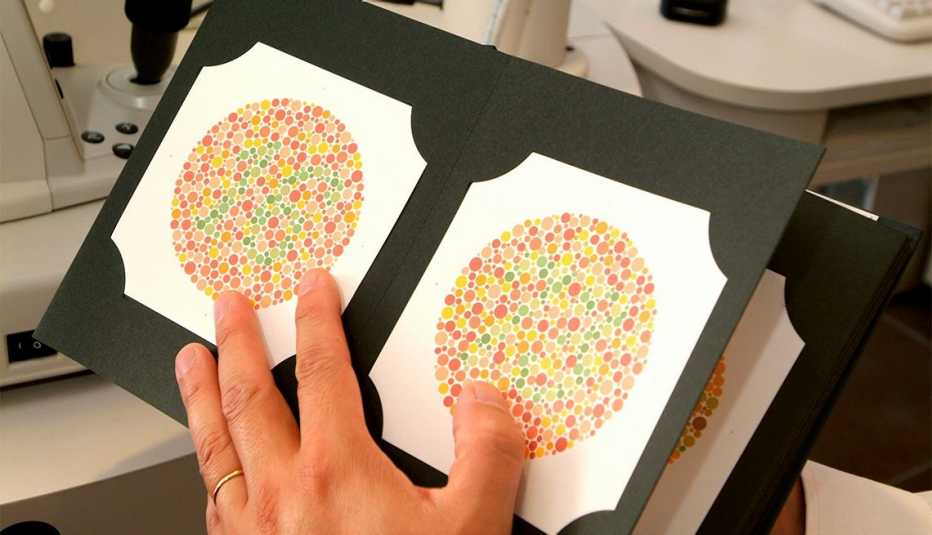AARP Hearing Center


It’s one of the most memorable scenes in movie history. In The Wizard of Oz, pigtailed farm girl Dorothy opens up the door to her farmhouse — which has come plummeting down to Oz, after a doozy of a tornado — and goes from a world of muted sepia tones to one of vibrant, glorious Technicolor. This legendary piece of Hollywood magic makes one thing clear: Color is a powerful thing.
People who are color-blind can’t appreciate the rainbow of hues that so many of us take for granted. But not being able to see all colors properly goes beyond mere aesthetics. It can make simple everyday tasks a challenge — from traveling (say, differentiating the colors in a traffic light or reading a subway map) to eating (being able to tell if a banana you’re about to peel is ripe) to getting dressed (color-coordinating can be a nightmare).
Color blindness is often misunderstood. One common misconception is that people who are color-blind live in a world devoid of color. “In fact, the vast majority of people who have color blindness can see colors, but certain colors — red and green, in particular — appear washed out and muddy,” says ophthalmologist Jane Edmond, director of the Mitchel & Shannon Wong Eye Institute and a professor in the Department of Ophthalmology at Dell Medical School, at the University of Texas at Austin. “This can make distinguishing between certain colors a challenge.”
In fact, says Edmond, “color deficiency” is a more accurate way to describe the condition.
Color blindness can range from mild (some people only have trouble distinguishing colors in dim light, for example) to more severe, but the degree of severity doesn’t change and usually doesn’t affect the sharpness of vision. Trouble seeing the difference between red and green (or red-green color blindness) is the most common form of the condition. Both colors may take on a kind of brownish murky-greenish tone, which can make for some confusion. “One of my patients, who is red-green color deficient, would pick wild strawberries as a young child,” says Edmond. “He would always come back with a basket of leaves, because he had a hard time distinguishing between red and green.”
An inability to distinguish between blue and yellow is much less common. Being completely color-blind (read: seeing things in black, white or shades of gray) is a severe form of the condition, called achromatopsia. It’s extremely rare and accompanied by bad overall vision.
How it happens
The retina is covered with two types of light-sensitive photoreceptors, called rods and cones. Rods detect light and dark. Cones are responsible for color vision. There are three types of cones: One perceives longer (or red) wavelengths, another medium (green) wavelengths, and another short (or blue) wavelengths. Together, these cones allow us to see an entire spectrum of colors. If just one type of cone is faulty, the eye may have trouble seeing certain hues. Reasons for that include:

































































More on health
Test Your Eye-Q
Take this quiz to see how much you know about cataracts, glaucoma and other eye health issues
Older Adults Need More Focus on Vision
Many people don’t get screened when eye problems are not obvious